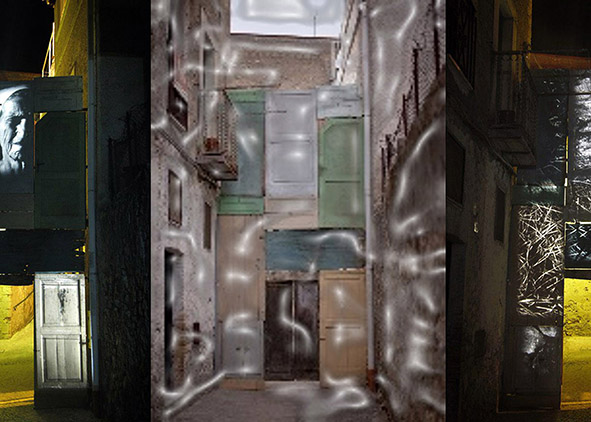Communicative-visual value of environmental art festival
DOI:
https://doi.org/10.19229/2464-9309/4272018Keywords:
environmental art, artistic product, communicative value, creativity, art-architecture integrationAbstract
Many forms of art leave their imprint on contemporary art culture as a complex system of ideas and emotions, perceptions and stimuli for reflection. The role of artistic installations in historical contexts is related to the impermanence between necessity and pleasure, showing how works of art become a necessity not only for the artist but above all for the urban spaces that welcome them and for the people who live there. The socio-cultural value of this kind of event is part of the cathartic and pedagogical role of art, which allows urban spaces to find ideas for enhancement and people to experience the emotion of belonging. The considerations contained in the contribution are the result of many years of scientific collaboration between the two authors on the issues of the relationship between art and architecture, and deepen two strongly representative cases: the biennial Festival of Environmental Art Seminar Sogninterra in Maranola and the Havana Art Biennale.
Downloads
Article Metrics Graph
References
Dal Lago, A. and Giordano, S. (2006), Mercanti d’Aura, Il Mulino, Bologna.
Florida, R. (2002), The Rise of the Creative Class, Basic Books, New York.
Gold, J. R. and Revill, G. (2004), Representing the Environment, Routledge, London.
Gukzik, L. et alii (2005), A study on Creativity Index, Home Affairs Bureau, The Hong Kong Special Administrative Region Government. [Online] Available at: www.hab.gov.hk [Accessed December 6th 2018].
Hui, D., Muzzillo, F. and Violano, A. (2008), Architettura e Creatività | Architecture and Creativity, Alinea Editrice, Firenze.
Huizinga, J. (1998), Homo Ludens – A Study of the Play-Element in Culture, Routledge-Taylor&Francis Group, Abingdon Oxfordshire.
Jiménez, J. (2007), Teoria dell’arte (Madrid 2002), Aesthetica Ed, Palermo.
Kastner, J. and Wallis, B. (eds) (1998), Land and Environmental Art, Phaidon Press, Londra.
Melucci, A. (1994), Creatività – Miti, discorsi, processi, Feltrinelli, Milano.
Perez-Hernandez, J. C. (2006), Inside Cuba, Taschen, Colonia.
Smith, T. W. (2015, it. ed.), The book of Human Emotions, UTET, Milano.
Turri, E. (1998), Il paesaggio come teatro – Dal territorio vissuto al territorio rappresentato, Marsilio Ed., Padova.

Downloads
Published
How to Cite
Issue
Section
License
This Journal is published under Creative Commons Attribution Licence 4.0 (CC-BY).
License scheme | Legal code
This License allows anyone to:
Share: copy and redistribute the material in any medium or format.
Adapt: remix, transform, and build upon the material for any purpose, even commercially.
Under the following terms
Attribution: Users must give appropriate credit, provide a link to the license, and indicate if changes were made; users may do so in any reasonable manner, but not in any way that suggests the licensor endorses them or their use.
No additional restrictions: Users may not apply legal terms or technological measures that legally restrict others from doing anything the license permits.
Notices
Users do not have to comply with the license for elements of the material in the public domain or where your use is permitted by an applicable exception or limitation.
No warranties are given. The license may not give users all of the permissions necessary for their intended use. For example, other rights such as publicity, privacy, or moral rights may limit how you use the material.


















































































